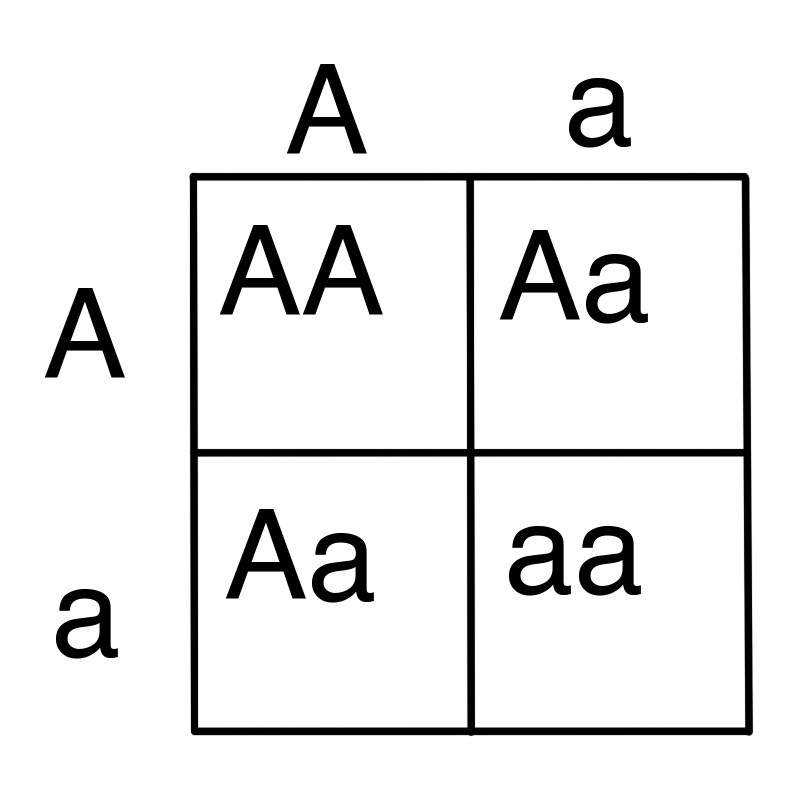Genetic inheritance refers to a basic principle of genetics that explains how characteristics are passed on from one generation to the next.
Genetic inheritance comes as a result of genetic material that is in the form of DNA being passed on from parents to their offspring. During the reproduction of organisms, all the information for reproduction, growth, and survival for the next generation is found in the DNA that is passed down from the parent generation.
Most of the understanding of inheritance started with the work of a monk known as Gregor Mendel. His experiments as well as “Laws of inheritance” provided the foundation for modern genetics.
In sexual reproduction, genetic material from two parents is combined and passed to one individual. Despite the offspring receiving a combination of genetic material from two parents, some specific genes from each parent will dominate the expression of different traits.
Gregor Mendel was a scientist and a monk and he is commonly known as the father of modern genetics. He conducted a series of experiments checking at the inheritance of several characteristics in pea plants. Mendel published his work in the year 1865 (24 years before the use of the word gene). The significance of Mendel’s research was not appreciated until 1900, 16 years after his death.
Mendel is recognized as the first person to understand the process of how characteristics are passed on to offspring from parents.
Following three generations of cross-breeding, Mendel came up with three significant conclusions with regard to genetic inheritance.
His first conclusion was that every trait is passed on unchanged to offspring through units of inheritance. These units are known as alleles.
Mendel’s second conclusion was that offspring inherit one allele from each parent for each characteristic.
His final conclusion was that some alleles may not be expressed in an individual but they can still be passed on to the next generation.
Alleles and genotypes are important foundations of genetics. An allele refers to a particular form of a gene that is passed from parents to their offspring. A genotype refers to the combination of two alleles one from each parent.
The physical expression of a genotype is known as the phenotype. The genotype (a specific combination of two alleles) influences the phenotype (the physical expression of a trait).
An allele is a particular form of a specific gene. Gregor Mendel conducted his experiments on peas by crossing different traits of one characteristic, like flower color.
The variation in traits for example white or purple flowers are brought about by different alleles. Individuals mostly have two alleles for every gene; one allele is inherited from their father and the other from their mother.
Depending on the allele that one has received, it will determine the manner in which their genes are expressed. For example, if two parents having blue eyes passed the blue-eyed alleles onto their children, their children will also possess the alleles for blue eyes.
Certain alleles have the ability to dominate the expression of a particular gene. For example, if a child has received a blue-eye allele from their father and a brown eye allele from their mother, the child will have brown eyes because the brown eye allele is dominant over the blue eye allele. In this case, the brown eye allele is known as the 'dominant' allele and the blue-eye allele is known as the 'recessive' allele.
The genotype is the genetic combination of two alleles. If, for example, a child has received one brown eye allele - represented by
The physical appearance of the genotype is called the phenotype. For example, children with the genotypes ‘
The phenotype can also be influenced by the environment and sometimes certain alleles will be expressed in some environments but not in others. Therefore two individuals with the same genotype can sometimes have different phenotypes as they live in different environments.

Punnet squares are used to identify the possible genotypes as well as phenotypes of offspring. They are a useful tool for recognizing the chance of offspring expressing certain traits. In the above Punnet Square, potential genotypes of offspring when a homozygous dominant (